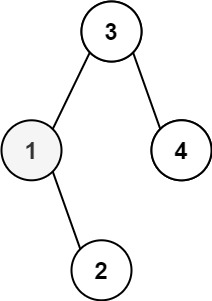Given an array
nums with n objects colored red, white, or blue, sort them in-place so that objects of the same color are adjacent, with the colors in the order red, white, and blue.We will use the integers
0, 1, and 2 to represent the color red, white, and blue, respectively.You must solve this problem without using the library’s sort function.
Example 1:
Input: nums = [2,0,2,1,1,0]
Output: [0,0,1,1,2,2]
Example 2:
Input: nums = [2,0,1]
Output: [0,1,2]
Constraints:
n == nums.length
1 <= n <= 300nums[i] is either 0, 1, or 2.*Follow up: Could you come up with a one-pass algorithm using only constant extra space?
题目大意:
排序3值数组
算法思路:
类似于Quicksort的partition,但有三种值,需要有三个指针: left, i, right
注意事项:
- 三个指针: left, i, right. 循环不是for每个元素,而是i <= right
- nums[2]的时候,right要往前移
- 和partition一样: nums[i] == 0,left和i都移动,nums[i] == 1只移动i
Python代码:
1 | def sortColors(self, nums: List[int]) -> None: |
Java代码:
1 | public void sortColors(int[] nums) { |
算法分析:
时间复杂度为O(n),空间复杂度O(1)







